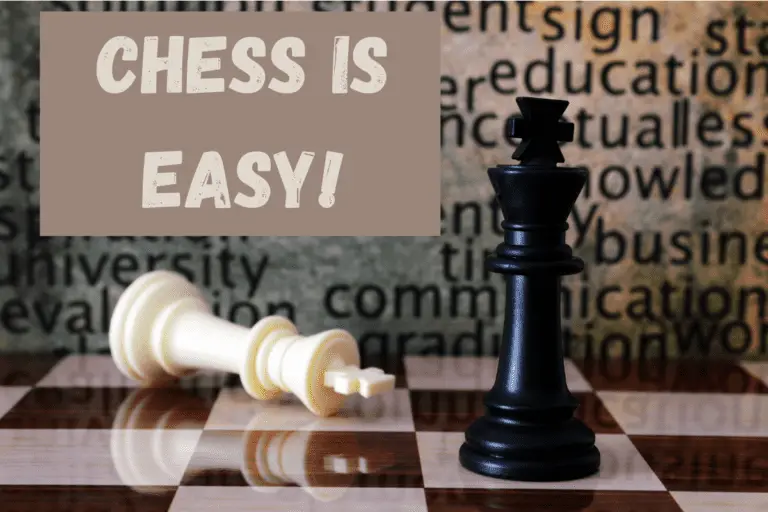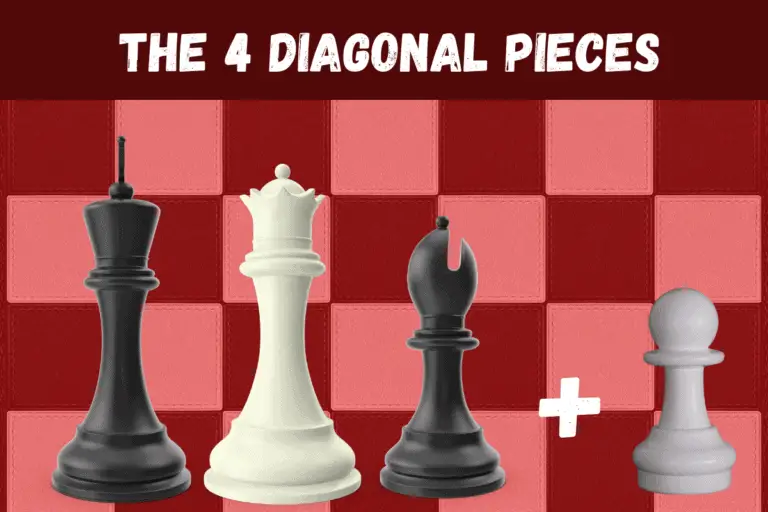Threefold Repetition Draw in Chess – Claim (Official Rule & History)
⭐⭐⭐ Take 5 minutes to read and improve your chess game ➡️ : This article was first published on, and is Copyright of Chessquestions.com
Are you looking to find out what the repetition rule in chess is after falling foul of it online and having a game drawn when you thought you were winning?
That is the most common way people find this article and question what the three-fold repetition rule is.
The threefold-repetition of position rule in chess asserts that if a position occurs 3 times in a chess game, a player may request a draw. A draw is an automatic occurrence on Chess.com after the third repetition but on LiChess and in a tournament game, a claim has to be made.
WARNING: The rule does not dictate that the draw applies with consecutive repetitive positions or a sequence of moves. The rule WILL apply regardless of whether there has been a break prior to the position happening previously or not.
Have a read through and you will find out why your game was drawn when you were not expecting it and how the threefold repetition rule is administered in chess.
Overview of Draw By Repetition in Chess
The threefold-repetition rule states that if a position is repeated three times, the game can be claimed as a draw by either player. The first time this situation arises, it’s generally up to the player who has the move to decide whether they want to continue playing or not.
If one side keeps repeating the same position and their opponent doesn’t want to play on, that player can claim a draw.
The second time the same situation arises, it’s generally up to the opponent of the side who played last to decide whether they want to keep playing or not – if they don’t, their opponent can claim a draw.
Three Fold Repetition or Five Move Repetition
OK, we should quickly point out the slight difference between the two rules of chess..
- At the time when a position on the board is repeated three times, the option to CLAIM a draw by either player is open, whereby, if one player decides, they can choose to end the game as a draw by claiming it.
- Should the claim not be made but the position repeated for the fifth time then no claim is required and the game will be drawn regardless.
This is a small nuance in the rules, but one that is handy to recall.
Draw by Repetition on Chess.com vs LiChess
If you happen to play chess online at either, or indeed, both chess.com and LiChess, you should be aware that the software for each site acts differently for the three-fold rule, whereby chess.com will award a draw automatically on threefold repetition, whereby in LiChess, a claim has to be made.
The latter would seem to be the correct way to go about things, chess.com just wants the game over and move on to the next eh?
Advantage of Draw by Threefold Repetition
The over-arching advantage of the rule and the reason for its inclusion into the game was to prevent a game from continuing indefinitely, with the exception of other move rules, and ensure a game can come to a conclusion.
The game of chess can go on long enough as it is, as has been shown in the 2021 World Championship between Magnus Carlsen vs Ian Nepomniachtchi, where the 6th game was the longest in World Championship history at 136 moves over almost 8 hours.
For the player, if you are in a no-win position and the draw is the best you can hope for in the game, you can try to coax your opponent into mistakenly playing the position for a third time thus allowing the draw claim.
The Official Rule of Draw by Repetition According to FIDE
This is reproduced from the FIDE Handbook Article 9 in regards to the ‘drawn game’
Article 9: The drawn game
9.1.1 – The regulations of an event may specify that players cannot offer or agree to a draw, whether in less than a specified number of moves or at all, without the consent of the arbiter.
9.1.2 – However, if the regulations of an event allow a draw agreement the following shall apply:
9.1.2.1 – A player wishing to offer a draw shall do so after having made a move on the chessboard and before pressing his clock. An offer at any other time during play is still valid but Article 11.5 must be considered. No conditions can be attached to the offer. In both cases the offer cannot be withdrawn and remains valid until the opponent accepts it, rejects it orally, rejects it by touching a piece with the intention of moving or capturing it, or the game is concluded in some other way.
9.1.2.2 – The offer of a draw shall be noted by each player on his scoresheet with the symbol (=).
9.1.2.3 – A claim of a draw under Article 9.2 or 9.3 shall be considered to be an offer of a draw.
9.2.1 – The game is drawn, upon a correct claim by a player having the move, when the same position for at least the third time (not necessarily by a repetition of moves):
9.2.1.1 – is about to appear, if he first writes his move, which cannot be changed, on his scoresheet and declares to the arbiter his intention to make this move, or
9.2.1.2 – has just appeared, and the player claiming the draw has the move.
9.2.2 – Positions are considered the same if and only if the same player has the move, pieces of the same kind and colour occupy the same squares and the possible moves of all the pieces of both players are the same. Thus positions are not the same if:
9.2.2.1 – at the start of the sequence a pawn could have been captured en passant
9.2.2.2 – a king had castling rights with a rook that has not been moved, but forfeited these after moving. The castling rights are lost only after the king or rook is moved.
History of Threefold Repetition
One might think that this rule is a modern addition to the game of chess but it has been bandied about since 1842 when a six-fold repetition was cited to be necessary to claim a draw.
Some 44 years later and there was a definitive change and edit around the World Chess Championship in 1886 between Wilhelm Steinitz and Johannes Zukertort, when the rule was still based on a ‘series of moves six times in succession’.
In two of the games of the match, the same position was repeated three times but not 6 moves and the rules were modified subsequently to the current, repeated position three times.
The threefold repetition rule appears in the first 1928 edition of the laws of chess, without references to casting and en passant which were added later in 1975 and not outlined in a more clear and concise fashion until 1985.

![50 Most Common Questions About Chess [Chess FAQs]](https://chessquestions.com/wp-content/uploads/2022/02/Questions-about-chess-768x512.jpeg)




